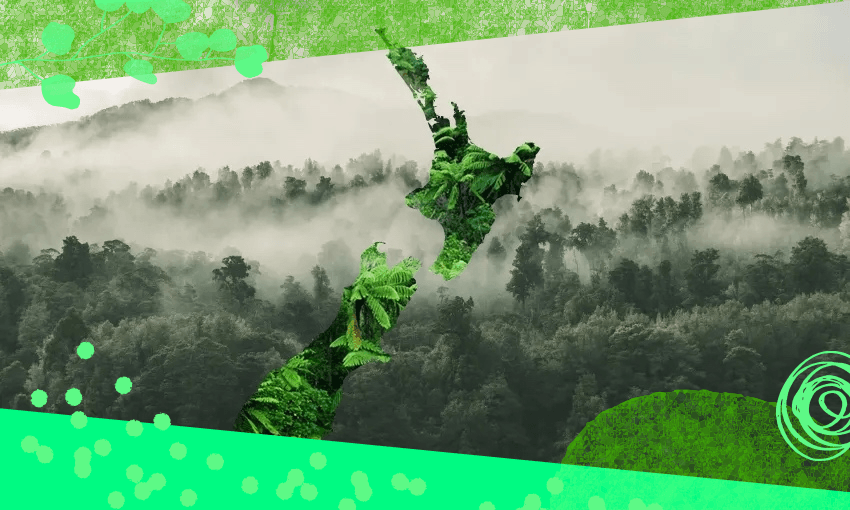Could Aotearoa restore 8% of its land to create enduring indigenous-forest carbon sinks?
This is an excerpt from our weekly environmental newsletter Future Proof, brought to you by AMP. Sign up here.
Native forests cover about 29% of New Zealand’s landmass, but once extended across as much as 85% of the country. A new proposal to “recloak” Papatūānuku by restoring 2.1 million hectares to healthy indigenous forest over 10 years seeks to create an “enduring carbon sink” that boosts biodiversity and enhances landscape resilience at the same time.
Launched to a global audience at Cop28 earlier this week, Recloaking Papatūānuku is an initiative spearheaded by Pure Advantage, a green growth organisation, and Tāne’s Tree Trust, supported by a raft of signatories.
The proposal suggests rewilding across a range of different types of public and private land – excluding productive cropland or other areas unsuited to native forest. Marginal high country and Crown land could be naturally reverted, while areas with existing protection or low productivity that lack bush cover could be actively replanted. All these trees could then suck up and store planet-heating carbon.
“It’s not a substitute for urgent and deep cuts to gross emissions,” Pure Advantage executive director Simon Millar said at Cop28. “The reality is that we need both, at scale and fast.”
This ambitious effort could sequester approximately 300 million tonnes of carbon over the next 30 years, or up to 1.5 billion tonnes by 2100, the proposal estimates. The latter is about 20 times New Zealand’s annual greenhouse gas emissions.
However, it takes time for trees to grow. This means that planting trees now would only make a small dent in New Zealand’s nearest emissions reduction targets in 2030. Andrew Grant, Pure Advantage trustee from McKinsey, said that the initial “heavy lifting” would come from enhancement of existing forests. “Pest control is going to be a big part of that in the short term. it’s very, very confronting how much of biomass is being consumed by pests, particularly ungulates,” he said. Recent research has highlighted the impact of forest-munching animals like deer, which affect the forest’s ability to store carbon and regenerate.
Former climate change minister James Shaw called the plan “awesome”. He said it could make a “colossal difference” to longer term climate targets. “When those trees are growing to maturity, that could be the difference between having to buy offshore credits or not. And that’s massive for us,” he said.
Millar points out that the plan is not just about carbon, but delivers benefits for biodiversity and helps ensure the landscape is resilient in the face of extreme weather events. It’s also a boost to New Zealand’s global reputation. “For a nation that trades on the authenticity of its clean, green credentials, we see Recloaking Papatūānuku as a critical investment in our natural infrastructure to repair and grow our natural capital,” he said.
The plan would cost up to $12 billion to implement up to 2050. But this is cheaper than the estimated costs of this year’s flood and cyclone damage (up to $14 billion), and could be achieved at only half the cost per tonne of carbon removed compared to buying international offsets later down the track, the proposal argues.
To be successful, the nationwide effort would need community mobilisation – and the financial backing of the government. Climate change minister Simon Watts said the idea is “an exciting opportunity” and that he is committed to “start discussions with other ministers” about it.
Dame Anne Salmond, one of Pure Advantage’s trustees, said that Recloaking Papatūānuku is practical, achievable and backed by “very rigorous analysis”. But it’s also “a big beautiful idea we can work on together,” she said. “I think our country desperately needs this kind of project at the moment. One that unites us and gives us hope and pride.
“We need to do our best for our children and our grandchildren and take care of our beautiful land.”


